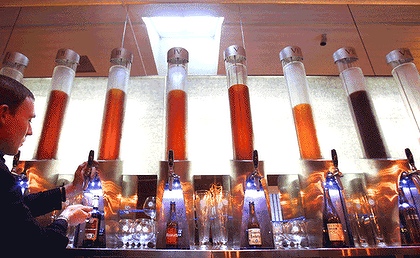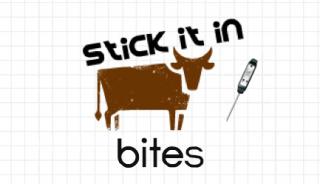Memorial Day is meant to honor U.S. soldiers who died while in the military service.
 Memorial Day, celebrated annually on the last Monday of May, also marks the unofficial start to summer, with public pools opening, barbecues fired up, and hockey playoffs (the last one may just be me, with game 2 of the National Hockey League finals tonight).
Memorial Day, celebrated annually on the last Monday of May, also marks the unofficial start to summer, with public pools opening, barbecues fired up, and hockey playoffs (the last one may just be me, with game 2 of the National Hockey League finals tonight).
There’ll be a lot of beer and a lot of burgers consumed today (in our case, BBQ chicken legs, backs attached, I’ve significantly improved the recipe).
Greg Wyshynski of Yahoo! Sports writes all U.S.-based puckheads have obligations during the Stanley Cup Finals, in order to create awareness of championship round and continue The Game’s growing insurgency into popular culture.
1. Buy Nielsen Families Beer, Watch Hockey With Them
2. Insert Hockey References Into Other Sports Conversations.
3. Insert Hockey References Into Every Conversation.
4. HockeyBomb Social Media.
5. Drink Beer. This really has nothing to do with growing the sport. But we find the Finals to be much more enjoyable after a few frosties.
But not at $160 a bottle.
Australian Mik Halse celebrated the arrival of son Oliver earlier this month by treating his friends to two bottles from Scottish brewery BrewDog: Tactical Nuclear Penguin and Sink the Bismarck. As the former and current world-record holders for strongest beer made to date (32 per cent and 41 per cent respectively), they cost $150 and $160 a bottle.
Halse is among a growing band of beer connoisseurs prepared to open their wallets to indulge their palates. While the cost may seem prohibitive, these exotic  brews are savoured in much the same way as a fine whisky or brandy, generally sipped slowly in 30-millilitre drams. Most can be kept for a few days after being opened without spoiling and some come with reusable stoppers.
brews are savoured in much the same way as a fine whisky or brandy, generally sipped slowly in 30-millilitre drams. Most can be kept for a few days after being opened without spoiling and some come with reusable stoppers.
In a world-first concept that removes the gamble of buying an untried costly bottle of beer, the newly opened Biero bar in Little Lonsdale Street (Melbourne) has installed 10 ”beervaults” – clear, cylindrical dispensers created by Footscray design company JonesChijoff.
The vaults allow bottled beer to be transferred into pressure and temperature-controlled tubes that act like kegs to keep beer fresh. They’re the $150,000 brainchild of a group of Melbourne graduates who wanted a way to sample exotic beers available only in bottles. ”This way we can showcase some really rare bottles or give people the chance to buy an expensive beer to be transferred to the vaults where it can be kept fresh for up to four or five days,” says co-founder Iqbal Ameer.
Customers can either buy a beer sample from a dispenser, or use a spare vault to store a full bottle of beer they want to savour over a few nights at the bar.
 Hockey’s a game for grafters, which in Brit-speak means hard-workers.
Hockey’s a game for grafters, which in Brit-speak means hard-workers.
And when cooking that burger, don’t be afraid to stick it in, using a tip-sensitive digital thermometer. The magazine, Good Housekeeping, another icon of America, says that as part of making perfect burgers,
“Burgers don’t have to be well-done to be safe — just not rare. Cooking times will vary, depending on the thickness of the patties and the heat of the grill, so the only way to be sure the burgers are done is to make them all the same size, then break into one to check. Or you can use an instant-read thermometer inserted horizontally into the patty to get a reading in seconds.”
Ignore the first part. A thermometer is the only way to tell. No one wants to make fellow hockeyheads barf. Below is a periodic table of beer styles I got from Coldmud.



 It’s the Thursday morning before the long-weekend carnivorous orgy known as Memorial Day, so of course there are media accounts of meat:
It’s the Thursday morning before the long-weekend carnivorous orgy known as Memorial Day, so of course there are media accounts of meat:  I literally just got home from one of my favorite casual dining restaurants here in Olathe. I ordered my favorite sandwich — the Avocado Turkey Burger. The server took my order first as my girlfriend was still deciding what to order. She ordered a different turkey burger (copy cat). As the server wrote her order down I jokingly called my girlfriend a "Copy Cat" out loud at the table for ordering the same (almost the same) sandwich. So to be different, I told the server "Hey, can I get my turkey burger medium rare"….she said "sure no problem sir", took her pad back out, wrote it down and walked off. I called her back to the table to explain I was just joking and that turkey had to be cooked "all the way."
I literally just got home from one of my favorite casual dining restaurants here in Olathe. I ordered my favorite sandwich — the Avocado Turkey Burger. The server took my order first as my girlfriend was still deciding what to order. She ordered a different turkey burger (copy cat). As the server wrote her order down I jokingly called my girlfriend a "Copy Cat" out loud at the table for ordering the same (almost the same) sandwich. So to be different, I told the server "Hey, can I get my turkey burger medium rare"….she said "sure no problem sir", took her pad back out, wrote it down and walked off. I called her back to the table to explain I was just joking and that turkey had to be cooked "all the way."  them just before cooking with an equal amount of kosher salt and black pepper, then seared them in a steel skillet pre-heated to 450°F (which was temped with an infrared thermometer before adding the patties). The ambient air in the kitchen was at an unbearably hot 76°F. Each patty was cooked to an internal temperature of 125°F, and was then rested for five minutes at room temperature before being autopsied for examination.
them just before cooking with an equal amount of kosher salt and black pepper, then seared them in a steel skillet pre-heated to 450°F (which was temped with an infrared thermometer before adding the patties). The ambient air in the kitchen was at an unbearably hot 76°F. Each patty was cooked to an internal temperature of 125°F, and was then rested for five minutes at room temperature before being autopsied for examination. “How would you like that done?”
“How would you like that done?” Must run in the family. When I returned the table-top, the first thing a server did was wipe it down with a cloth soaked in sanitary solution.
Must run in the family. When I returned the table-top, the first thing a server did was wipe it down with a cloth soaked in sanitary solution. 1990s, and then dismayed as the amount of crap published began to far outweigh the thoughtful stuf.
1990s, and then dismayed as the amount of crap published began to far outweigh the thoughtful stuf. “I don’t eat much meat these days, but everything about that shop made me feel safe, from the quaint striped awning to the well-heeled locals queuing up for their premium giblets to the butcher with his starched, white-linen apron making small talk as he trimmed the leg of lamb. Even the store’s slogan (“Real meat naturally fed”) was heartening. What could possibly be more healthy, comforting or downright trendy than a rib roast for Christmas? As I stepped out of the shop with my several pounds of Grade A flesh in hand, I was determined to follow the butcher’s emphatic instructions: “Do not overcook.”
“I don’t eat much meat these days, but everything about that shop made me feel safe, from the quaint striped awning to the well-heeled locals queuing up for their premium giblets to the butcher with his starched, white-linen apron making small talk as he trimmed the leg of lamb. Even the store’s slogan (“Real meat naturally fed”) was heartening. What could possibly be more healthy, comforting or downright trendy than a rib roast for Christmas? As I stepped out of the shop with my several pounds of Grade A flesh in hand, I was determined to follow the butcher’s emphatic instructions: “Do not overcook.” Shill. Mere mortals do not have to become certified food handlers to cook dinner for the in-laws, or anyone else.
Shill. Mere mortals do not have to become certified food handlers to cook dinner for the in-laws, or anyone else.  I told
I told .jpg) For Christmas Eve dinner, which has no special significance other than we made it home from Minnesota before the storm hit, only to get walloped in Manhattan, I decided to cook the lamb – with a rosemary, Dijon mustard glaze, to a yummy and greasy thermometer-verified 140F. Accompanied with roasted potatoes and carrots, along with microwaved asparagus in garlic, olive oil and balsamic vinegar, with whole wheat rolls and a mushroom-fat-free-lamb-stock roux. Served with a 2005 Zinfandel from Napa Valley courtesy of Amy’s Aunt Jean and Uncle Mark.
For Christmas Eve dinner, which has no special significance other than we made it home from Minnesota before the storm hit, only to get walloped in Manhattan, I decided to cook the lamb – with a rosemary, Dijon mustard glaze, to a yummy and greasy thermometer-verified 140F. Accompanied with roasted potatoes and carrots, along with microwaved asparagus in garlic, olive oil and balsamic vinegar, with whole wheat rolls and a mushroom-fat-free-lamb-stock roux. Served with a 2005 Zinfandel from Napa Valley courtesy of Amy’s Aunt Jean and Uncle Mark. 

.jpg) “
“.jpg) “Partially defrosted turkeys are another common festive food safety blunder.”
“Partially defrosted turkeys are another common festive food safety blunder.”